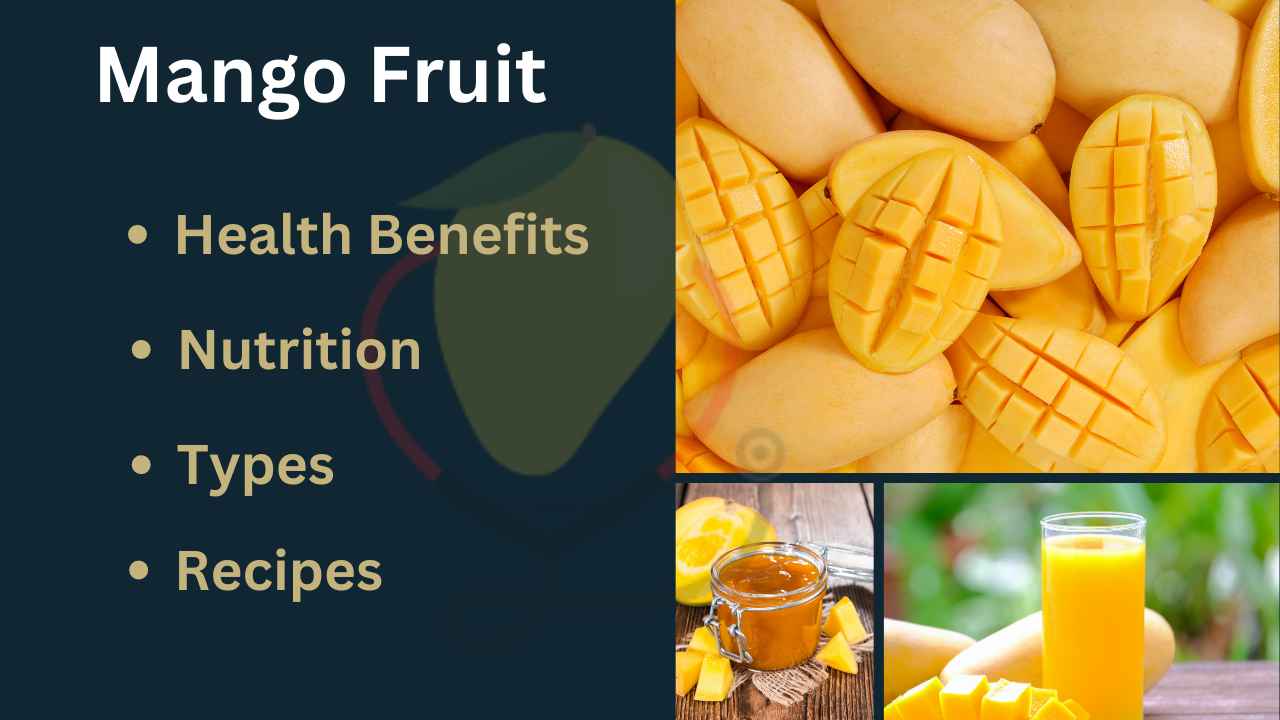Written By Sania Malik || Reviewed By Adeel Abbas
Mango is a delicious tropical fruit that is packed with nutrients and is loved by many. Mango is a fruit that is native to South Asia [1] but is now widely grown in many tropical and subtropical regions of the world. It is a member of the Anacardiaceae family, which also includes cashews, pistachios, and the sumac spice.
Mangoes have a sweet and juicy flesh that is usually orange or yellow in color, and they have a large, flat, oblong pit in the center. Mangoes are often eaten fresh as a snack or used in various culinary applications, such as smoothies, juices, salads, chutneys, and desserts.
In this article, we will discuss the various health benefits of mango and why it should be a part of your regular diet.
Origin of Mangoes
Mangoes are believed to have originated in South Asia, specifically in the northeastern part of India and Myanmar (formerly Burma), where they have been cultivated for over 4,000 years. The fruit then spread throughout Southeast Asia and eventually made its way to other parts of the world through trade and colonization.
The first recorded mention of mangoes was in ancient Hindu scriptures, the Vedas, which were written between 1500 and 1000 BCE. Mangoes were considered a symbol of love and were often given as gifts to kings and other nobility.
History of Mangoes
In the 18th century, mangoes were introduced to Florida by Spanish explorers, and in the 19th century, they were brought to California. Today, mangoes are grown in many tropical and subtropical regions around the world, including India, China, Thailand, the Philippines, Mexico, Brazil, and the United States.
Mangoes have a rich history and cultural significance in many parts of the world, and they remain a beloved fruit that is enjoyed both fresh and in a variety of culinary applications.
Scientific family of Mango
The scientific family [2] of mango is Anacardiaceae. This family includes other fruit-bearing trees and plants, such as cashews, pistachios, and sumacs. The mango tree (Mangifera indica) is the most widely cultivated member of the Anacardiaceae family, and it is prized for its delicious and nutritious fruit. The mango tree is an evergreen tree that can grow up to 100 feet tall, and it is native to South Asia. Today, mangoes are grown in many parts of the world and are enjoyed by people of all ages.
Taxonomy of Mango
Here is the taxonomy of the mango fruit:
| SubKingdom | Tracheophytes- Vascular Plants |
| Superkingdom | Spermatophyta-Seed plants |
| Division | Magnoliophta– Flowering plants |
| Class | Magnoliopsida– Dicotyledons |
| Subclass | Rosidae |
| Order | Sapindales |
| Family: | Anacardiaceae– Sumae family |
| Genus | Mangifera |
| Species | Mangifera indica |
The mango belongs to the family Anacardiaceae, which also includes cashews, pistachios, and the sumac plant. The genus Mangifera consists of approximately 69 species, but Mangifera indica is the most widely cultivated and economically important species.
Mango farming and cultivation
Mango farming and cultivation involves the growing and harvesting of mango trees, which are native to South Asia but are now widely grown in tropical and subtropical regions around the world. Mango trees are typically grown for their sweet and juicy fruit, which is a popular ingredient in a variety of dishes and drinks.
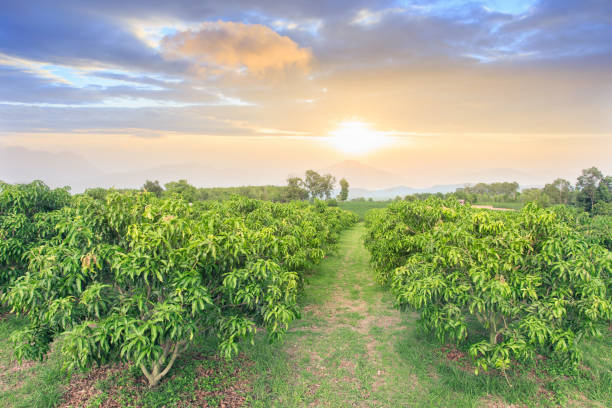
Here are some key steps involved in mango farming and cultivation:
1: Choosing a suitable location
Mango trees require a warm, sunny location with well-draining soil. They do best in areas with a tropical or subtropical climate, where they can receive plenty of sunshine and rainfall.
2: Preparing the soil
The soil should be prepared before planting the mango tree. This may involve testing the soil to determine its nutrient content, adding organic matter like compost or manure to improve soil quality, and ensuring good drainage.
3: Planting the mango tree
Mango trees are typically planted from seedlings or grafted saplings. Seedlings are cheaper but may take longer to bear fruit, while grafted saplings are more expensive but tend to produce fruit sooner.
4: Watering and fertilizing
Mango trees require regular watering, particularly during the first few years of growth. Fertilizers may also be applied to improve growth and fruit production.
5: Pruning
Pruning can help to shape the tree, promote healthy growth, and increase fruit production. This may involve removing dead or damaged branches, thinning out the canopy to allow for more sunlight, and shaping the tree to a desired form.
6: Pest and disease management
Mango trees may be susceptible to a variety of pests and diseases, including fruit flies, scales, and powdery mildew. Proper pest and disease management strategies may involve the use of natural predators, chemical sprays, or other interventions.
7: Harvesting
Mangoes are typically harvested when they are fully ripe and have a sweet, fragrant aroma. They should be handled carefully to avoid bruising or damage.
Mango farming and cultivation requires careful attention to soil quality, watering and fertilizing, pruning, and pest and disease management. With proper care, however, mango trees can produce a bountiful harvest of sweet and delicious fruit for years to come.
Low in Calories and High in Nutrients
Mango is a low-calorie fruit that is packed with nutrients. Mango is rich in several essential nutrients, including vitamin C, vitamin A, potassium, and fiber. One cup of diced mango contains about 100% of your daily recommended intake of vitamin C, which is essential for a healthy immune system. [3]
Mangoes also contain antioxidants that protect your cells from damage caused by free radicals. One cup of sliced mango contains just 99 calories, making it a great snack for those who are watching their weight. In addition to being low in calories, mango is high in fiber, vitamin C, vitamin A, and folate. These nutrients help support a healthy immune system, promote healthy digestion, and may even help reduce your risk of chronic diseases.
Types of Mango [4]
There are many different types of mangoes, [5] each with its own unique flavor, texture, and appearance. Here are some of the most common types of mangoes:
1: Alphonso Mango
Originating from India, Alphonso mangoes are known for their rich, sweet flavor and smooth, creamy texture. [6]
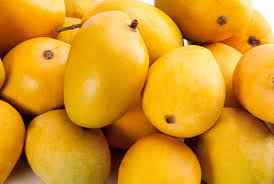
2: Ataulfo Mango
It isalso known as the honey mango or Manila mango; Ataulfo mangoes are small, yellow, and oval-shaped with a sweet and buttery flavor. [7]
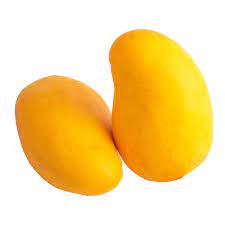
3: Tommy Atkins Mango
This is the most widely cultivated variety of mango in the world. Tommy Atkins mangoes are large, red and green in color, and have a mild and slightly tart flavor. [8]

4: Kent Mango
Kent mangoes are oval-shaped with a green and yellow skin and a sweet, juicy flesh. They are often used in juices and smoothies. [9]
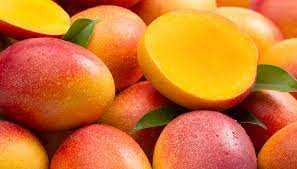
5: Haden Mango
Haden mangoes are large, red, and green in color, with a sweet and juicy flesh. They are commonly used for eating fresh, as well as in jams and jellies. [10]
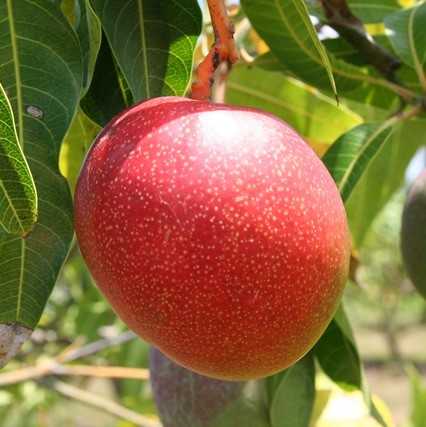
6: Keitt Mango
Keitt mangoes are large, oval-shaped, and have a green skin with a sweet and juicy flesh. They are often used in salads and salsas. [11]
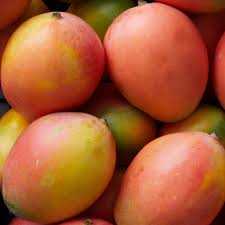
7: Valencia Pride Mango
This variety of mango is known for its large size, oval shape, and sweet, juicy flesh. It is often used in desserts and smoothies. [12]
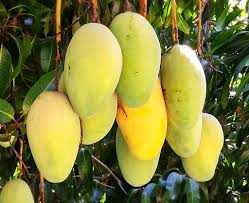
Pakistan is known for its delicious and juicy mangoes, which are considered one of the best in the world. [13] There are several types of mangoes grown in Pakistan, each with their own unique taste and characteristics. Here are some of the most popular types of mangoes grown in Pakistan:
8: Sindhri Mango
Sindhri is a premium variety of mango that is grown in the Sindh region of Pakistan. It is considered one of the most flavorful and aromatic mangoes in the world. It is large in size, with a bright yellow skin and a sweet, juicy flesh [14].

9: Chaunsa Mango
Chaunsa is another popular variety of mango that is grown in the Punjab region of Pakistan. It is a medium-sized mango with a golden-yellow skin and a sweet, aromatic flesh. It is known for its rich, buttery texture and is often called the “King of Mangoes”.[15]
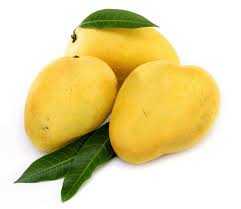
10: Anwar Ratol Mango
Anwar Ratol is a small, oval-shaped mango that is known for its sweet, fragrant aroma and juicy flesh. It is grown primarily in the Punjab region of Pakistan. [16]
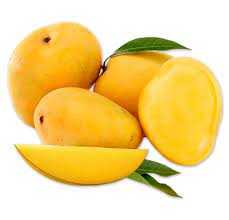
11: Langra Mango
Langra is a popular variety of mango that is grown in several regions of Pakistan. It is a medium-sized mango with a greenish-yellow skin and a sweet, juicy flesh. It is known for its unique flavor, which is a blend of sweet and sour. [17]
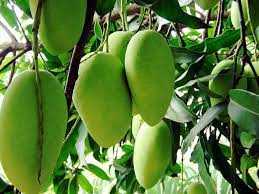
12: Dusehri Mango
Dusehri is a popular variety of mango that is grown in the northern regions of Pakistan. It is a small to medium-sized mango with a yellowish-green skin and a sweet, aromatic flesh. It is known for its unique flavor, which is a combination of sweet and tangy. [18]
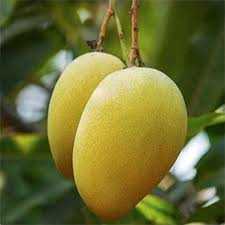
13: Fajri Mango
Fajri is a late-season mango variety that is grown in the Punjab region of Pakistan. It is a medium-sized mango with a greenish-yellow skin and a sweet, juicy flesh. It is known for its rich flavor and aroma, which makes it a popular choice for making mango juice. [19]
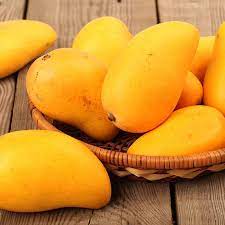
14: Manila Mango
This small, yellow mango is sweet and juicy, with a thin skin. It is primarily grown in the Philippines.
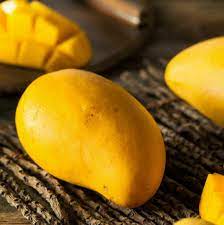
15: Keitt Mango
This large, green mango is a cross between the Kent and Brooks varieties. It has a sweet, mild flavor and a firm texture.
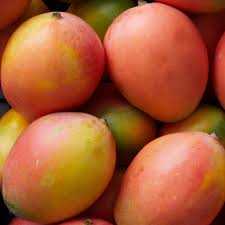
16: Honey Gold Mango
This small, yellow mango is a cross between the Kent and Ataulfo varieties. It has a sweet, creamy flavor and a smooth texture.
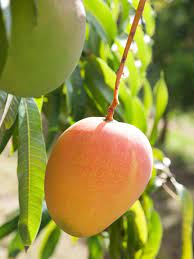
17: Palmer Mango
This green and red mango is a cross between the Haden and Brooks varieties. It has a sweet, tangy flavor and a soft, juicy texture.
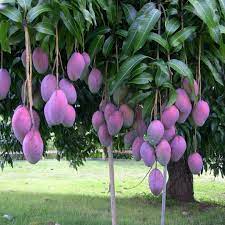
These are just a few of the many types of mangoes that are grown in Pakistan. Each type has its own unique flavor and characteristics, making Pakistani mangoes a true delight for mango lovers around the world.
Culinary uses of Mangoes
Mangoes are a versatile fruit with a delicious and unique flavor that can be used in a variety of culinary applications. Here are some common culinary uses of mangoes:
1: Fresh fruit
Mangoes can be enjoyed as a fresh snack or used as a topping for salads, yogurt, or oatmeal.
2: Smoothies and juices
Mangoes are a popular ingredient in smoothies and juices due to their sweet, tropical flavor.
3: Salsas and chutneys
Mangoes can be diced and mixed with onions, peppers, and herbs to create a flavorful salsa or chutney.
4: Curries and stews
Mangoes can be added to savory dishes like curries and stews to add sweetness and depth of flavor.
5: Desserts
Mangoes can be used in a variety of desserts, such as pies, cakes, sorbets, and ice cream.
6: Beverages
Mangoes can be used to make refreshing beverages like iced tea, lemonade, and cocktails.
7: Marinades and glazes
Mangoes can be pureed and used as a marinade or glaze for meats like chicken or pork.
Mango Nutrition
Mango is beloved by many not only for its delicious taste but also for its impressive nutritional content. [20] One cup (165 grams) of fresh mango provides numerous health benefits, including:
- 99 calories
- 1.4 grams of protein
- 24.7 grams of carbohydrates
- 0.6 grams of fat
- 2.6 grams of fiber
- 22.5 grams of sugar
- 67% of the Daily Value (DV) for vitamin C
- 20% of the DV for copper
- 18% of the DV for folate
- 12% of the DV for vitamin B6
- 10% of the DV for vitamin A [21] and vitamin E
- 6% of the DV for vitamin K and potassium
- 7% of the DV for niacin
- 5% of the DV for riboflavin
- 4% of the DV for magnesium and thiamine
One of the most impressive facts about mango is that just one cup provides almost 67% of the DV for vitamin C. This essential vitamin helps boost the immune system, aids in iron absorption, and supports cell growth and repair.
Mango is also a great source of the minerals copper and folate, which are crucial for healthy fetal growth and development, making it an excellent choice for pregnant women.
Health Benefits of Mango
Mango not only has a delicious taste but also provides several health benefits due to its impressive nutritional content. Below are benefits of mango, along with some tips on how to enjoy it. [22]
1: Boosts Immunity
Mango is an excellent source of vitamin C, which is essential for a healthy immune system. Consuming mango regularly can help boost your immunity and protect you from various infections and diseases. [23]
2: Supports heart health
Mangos are packed with important vitamins and minerals that offer numerous health benefits. [24] Mangoes can contribute to heart health due to their nutrient content, antioxidants, fiber, and potassium. They may help reduce oxidative stress, regulate cholesterol levels, and support healthy blood pressure.
3: Helps in regulating diabetes
“Mango may help in regulating diabetes” means that consuming mangoes may potentially aid in managing blood sugar levels and symptoms associated with diabetes. [25] Mangoes are a good source of fiber, which can help slow down the absorption of sugar in the bloodstream, and they also contain compounds that may have antioxidant and anti-inflammatory effects.
4: May support eye health
Mangoes are a great source of vitamin A, which can help improve vision and prevent issues like night blindness and dry eyes. [26] Mangos contain beta carotene and antioxidants like vitamin C, lutein, and zeaxanthin, which promote eye health. These compounds protect the retina and lens, improve visual range and contrast, reduce glare discomfort, and help the eyes recover from bright light stress.
5: Improves concentration and memory
Mango contains glutamic acid, an amino acid that is believed to have cognitive benefits, including improving concentration and memory. Mangoes are a good source of pyridoxine, which is important for the production of gamma-aminobutyric acid (GABA), a neurotransmitter that plays a role in brain development and function. [27]
6: Prevents heat stroke
Mangoes can be a refreshing and hydrating snack, but there is no scientific evidence to support the claim that they can prevent heat stroke. Mangoes do contain water and electrolytes, which can help to keep the body hydrated, there are many factors that contribute to heat stroke and prevention usually involves staying cool, drinking plenty of fluids, and avoiding prolonged exposure to hot temperatures. [28] It’s always a good idea to stay hydrated and take necessary precautions during hot weather conditions.
7: Helps in alkalizing your body
Mango is considered an acidic fruit due to its tart taste, but it has alkaline-forming properties when metabolized by the body. It produces alkaline byproducts like potassium and bicarbonate, which can help neutralize excess acidity in the body and maintain proper pH balance. Mango is a good source of fiber, vitamins, and minerals, contributing to a balanced diet. [29] However, the body’s pH balance is tightly regulated by the kidneys and respiratory system,
8: Aids Digestion
Mango contains both soluble and insoluble fibers, which aid in digestion and prevent constipation. The fiber in mango also helps regulate blood sugar levels and lower cholesterol levels. [30] Mangos are beneficial for your digestive system as they contain both amylase compounds and dietary fiber.
9: Promotes Healthy Skin
Mango is rich in vitamin A, which is essential for healthy skin. Vitamin A helps keep your skin moisturized and reduces the appearance of fine lines and wrinkles. Mango also contains antioxidants that protect your skin from damage caused by free radicals. [31]
10: As body scrub
Mango can be used as an ingredient in a homemade body scrub. The flesh of the mango contains enzymes that can help to exfoliate the skin and remove dead skin cells. [32] To make a mango body scrub, you can puree the flesh of a ripe mango and mix it with a coarse exfoliating ingredient such as sugar or salt. You can also add a moisturizing ingredient like coconut oil or honey to the mixture.
11: Mango Contains Immune-Boosting Nutrients
Mango is a great fruit to add to your diet to help support your immune system. One cup (165 grams) of mango provides 10% of your daily vitamin A needs, which is essential for a healthy immune system. Studies have shown that not getting enough vitamin A is linked to a higher risk of infections. [33]
12: Improve Hair
Mangoes contain vitamin A that supports hair, and glands development and maintenance. The sebaceous glands, attached to hair follicles, keep hair healthy and moisturized. [34]
13: Prevents Cancer
Mango contains several antioxidants, including quercetin, isoquercitrin, astragal in, fisetin, and Gallic acid, which help protect your cells from damage and prevent the development of cancer cells. [35]
14: Lowers Cholesterol
The fiber in mango helps regulate cholesterol levels and prevents the absorption of cholesterol in the intestine. Consuming mango regularly can help lower your cholesterol levels and reduce your risk of heart disease. [36]
15: May Ease Constipation
It’s important to keep in mind that although mangoes may alleviate constipation, they are considered a high-FODMAP food. FODMAPs are types of carbohydrates that can be difficult for the small intestine to absorb, and they may cause gas and bloating, particularly in individuals with irritable bowel syndrome (IBS). [37]
16: Age-related macular degeneration
Mangoes are a nutritious fruit containing vitamin C and B-6, fiber, and carotenoids that offer various health benefits, such as boosting immunity, aiding sleep, improving gut health, and fighting age-related macular degeneration. [38]
17: High in healthy plant compounds
Mangoes are a nutritious fruit that are high in beneficial plant compounds such as polyphenols and carotenoids. These compounds have been linked to various health benefits, including reduced inflammation and a lower risk of chronic diseases. Mangoes are also a good source of fiber, vitamins, and minerals, especially vitamin C. They make a delicious and healthy snack option. [39]
When to eat and How much to eat
Mangoes are a delicious and nutritious fruit that can be enjoyed as part of a healthy diet. The amount of mango you should eat depends on your individual needs and calorie requirements. As a general guideline, one cup of sliced mango contains approximately 100 calories.
When it comes to timing, you can enjoy mangoes as a snack or as part of a meal at any time of day. Some people prefer to eat mangoes in the morning, as a healthy start to their day, while others enjoy them as a sweet and refreshing dessert.
It’s important to note that while mangoes are a healthy food choice, they are also relatively high in sugar, so it’s best to enjoy them in moderation as part of a balanced diet.
How to Eat Mango
- Wash the mango thoroughly with cold water to remove any dirt or debris.
- Hold the mango with one hand, and use a sharp knife to slice off the top and bottom ends of the mango.
- Stand the mango on one of its flat ends, and use the knife to make a vertical cut down the center of the mango.
- You should feel the knife hit the mango’s seed.
- Hold one half of the mango with one hand and use the knife to make several horizontal cuts through the flesh, without cutting through the skin.
- Use a spoon to scoop out the mango cubes from the skin. Repeat with the other half of the mango.
- Alternatively, you can score the flesh without cutting through the skin, and then push the skin side up to make the mango cubes stand out.
- You can also eat the mango by simply cutting it into slices.
- Discard the mango seed and enjoy your juicy and sweet mango cubes!
How to Incorporate Mango into Your Diet
There are several ways to incorporate mango into your regular diet. You can add diced mango to your morning cereal, yogurt, or smoothie. You can also make a delicious mango salsa to serve with grilled chicken or fish. Additionally, you can enjoy a fresh, ripe mango as a snack on its own.
Best Mango Varieties for Cooking
When it comes to cooking with mango, not all varieties are created equal. Some mango varieties are better suited for eating raw, while others are ideal for cooking and baking. Here are some of the best mango varieties to look for when you’re planning to make a mango recipe:
1: Ataulfo
This variety of mango is known for its sweet and buttery flavor, and its smooth texture. It’s perfect for making smoothies and desserts. [40]
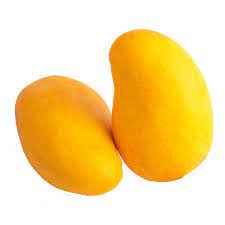
2: Haden Mango
This is one of the most popular mango varieties, and it’s ideal for cooking and baking. It has a sweet and fruity flavor, and a firm texture. [41]
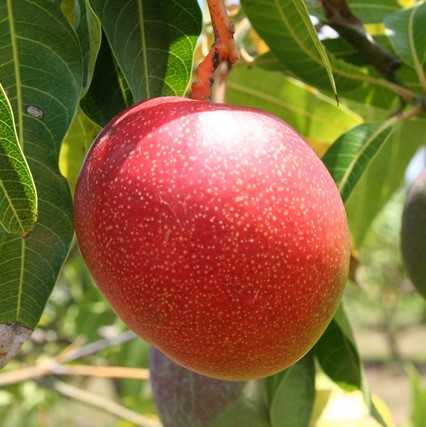
3: Tommy Atkins
This variety of mango is great for making salsa and chutney, thanks to its mild flavor and firm texture. [42]
Best Mango recipes
- Mango Salsa
- Mango Smoothie [43]
- Mango smoothie recipe with yogurt
- Mango Curry
- Mango Chutney [44]
- Mango Ice Cream [45]
- Mango Coconut Rice
- Mango BBQ Sauce
- Chili Lime Shrimp Tacos with Mango Salsa
- Mango Lassi
- Baked Salmon with Mango Salsa
- Mango Kulfi
Mango is a delicious and nutritious fruit that offers several health benefits. It is packed with essential nutrients, including vitamins A and C, fiber, and antioxidants.
Consuming mango regularly can boost your immunity, aid in digestion, promote healthy skin, prevent cancer, and lower cholesterol levels.
We hope that this article has convinced you to add mango to your regular diet and enjoy its health benefits.
FAQs
What is a mango?
A mango is a tropical fruit that is native to South Asia. It is known for its sweet, juicy flesh and distinctive flavor.
What are the different types of mangoes?
There are many different types of mangoes, each with its own unique flavor and texture. Some popular varieties include Alphonso, Ataulfo, Keitt, and Tommy Atkins.
How do you choose a ripe mango?
To choose a ripe mango, look for one that is slightly soft to the touch and has a sweet fragrance. Avoid mangoes that are bruised or have soft spots.
How do you cut a mango?
To cut a mango, slice off both ends and cut away the skin with a sharp knife. Then, cut the flesh away from the large, flat seed in the center.
What are the health benefits of mangoes?
Mangoes are a good source of vitamins A and C, as well as fiber and antioxidants. They may help improve digestion, boost immunity, and reduce the risk of certain diseases.
How should you store mangoes?
Mangoes should be stored at room temperature until they are ripe, then moved to the refrigerator to slow down the ripening process. They can also be frozen for later use.
How can you use mangoes in cooking?
Mangoes can be used in a variety of dishes, including smoothies, salads, chutneys, and desserts. They can also be grilled or roasted for a unique flavor.
Are mangoes safe for people with food allergies?
Mangoes are not a common allergen, but some people may have an allergic reaction to them. If you have a known allergy to mangoes or related fruits, it is best to avoid them.
Can mangoes be grown in different climates?
Mangoes are a tropical fruit and require warm temperatures to grow. However, some varieties can be grown in subtropical climates with mild winters.
What are some fun facts about mangoes?
Mangoes are the national fruit of India, Pakistan, and the Philippines. They are also the most widely consumed fruit in the world, second only to bananas.

